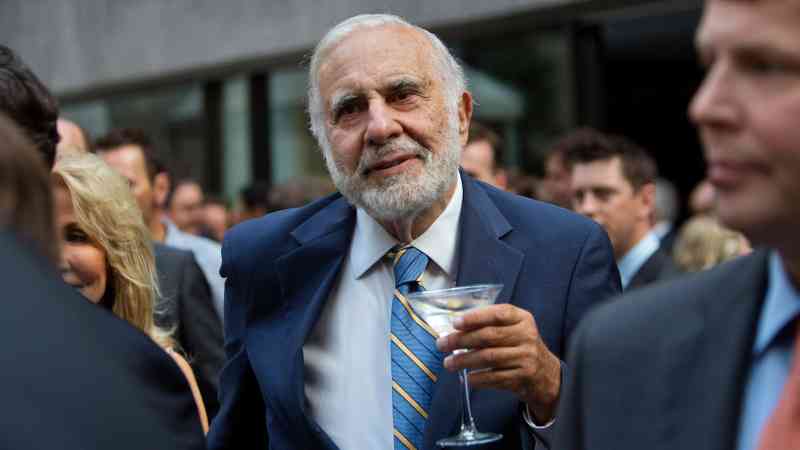If you want to solve the productivity puzzle, here’s who to ask
It was quite a coincidence. A few days ago, just after the release of the latest official productivity figures, I had a note informing me that, at the age of 77, John Neill was retiring as executive chairman of Unipart, which he joined 50 years ago.
Why the coincidence? If there has been such a thing as a “Mr Productivity” in British business in recent decades, it has been Neill. He achieved impressive productivity gains in his own business by pursuing what he described as “the Unipart Way”, with increases of 45 per cent, 60 per cent and even 150 per cent in the company’s manufacturing and logistics’ businesses.
David Cameron, just before he became prime minister, had visited Unipart and a few weeks later, when asked how a future Tory government would raise productivity, he told business leaders in Davos that it would do it the Unipart way.
Neill was happy to share productivity insights with other businesses and became something of an evangelist on the subject, offering a programme of productivity transformation for the NHS a few years ago that could have saved tens of billions of pounds, even hundreds of billions.
Most business leaders have “raise productivity” somewhere on their to-do list, but I haven’t come across many others who made it as central as he did. When Sir Jon Cunliffe, the former deputy governor of the Bank of England, visited the company and was rueing the “productivity puzzle”, Neill told him that talk of a puzzle was an excuse for inaction and that there should be no puzzle about how to boost productivity.
As he told me a little while ago, many business leaders think “there are three or four simple things that can be done that will guarantee success”. That, he said, was simply not the case. “It’s like asking how to become a concert pianist and perform at the Albert Hall. The answer is simple: buy piano, buy the music, but then you must practice under great coaches for at least 20 years.”
We need some of those great coaches now. Those productivity figures, released on the day of his announcement, were weak. Although output per hour for the economy as a whole edged up by 0.3 per cent in the second quarter, this still left it down by 0.1 per cent on a year earlier.
The output per worker measure also rose by 0.3 per cent in the second quarter, but, thanks to a drop in employment in the first quarter of 2024, which, alongside a 0.7 per cent rise in GDP, boosted productivity on this measure, it was 1.1 per cent up on a year earlier.
The picture for recent years is similar on both measures, with output per hour rising by a cumulative 2.1 per cent on pre-pandemic levels and output per worker up by 1.9 per cent. The annual growth in output per hour has been 0.5 per cent a year since before the pandemic, according to the Office for National Statistics, which described this as “relatively low”. It certainly is. Long gone are the days when 2 per cent a year productivity growth was the norm. The productivity weakness that set in 15 years ago, at the time of or slightly before the global financial crisis, persists.
Sir Jim Ratcliffe, the chairman and chief executive of Ineos, said recently that working from home had damaged productivity, citing a drop in email traffic on Fridays. He has some interesting views, to put it generously. He said at The Times CEO Summit in June that Rishi Sunak’s furlough scheme was to blame for high inflation. He has more support among businesspeople for his views on working from home than on furlough, but there is little evidence for either claim. Email traffic has always fallen on Fridays, even when everybody was glued to their desks.
The effect of working from home on productivity is disputed and remains an area that is maddeningly under-researched. Different sectors have very different experiences. One result that seems logical is that workers who are always present in the workplace are more productive than fully remote workers, who miss out on the creative buzz and, in some cases, suffer from a lack of supervision. Yet hybrid workers, part-home, part-workplace, are more productive than either and also enjoy a better work-life balance.
The latest productivity figures are due for a modest upward revision when new and higher GDP figures are embodied in the figures, as signalled recently by the ONS. That will leave productivity growth since the onset of the pandemic close to its 0.7 per cent growth rate for the ten years before it. Working from home has not shifted the dial, to the disappointment of those on either side of the debate.
Getting everybody back into the workplace will no more solve Britain’s productivity problems than any other apparent quick fix, though it would make many managers more comfortable.

The answer, according to Neill, is multifaceted. We need more and better investment, a more skilled workforce and infrastructure that works. Many people got in touch with me recently when I wrote about chronic delays on the motorway network to say how this was damaging productivity. We also need more innovation.
Above all, perhaps, we need managers with the drive and vision to push through productivity improvements even in the knowledge that the results will take time to show through. We do not have enough of what Neill describes as “great coaches”.
When Gordon Brown became chancellor more than a quarter of a century ago, in an era of 2 per cent productivity growth, he established a productivity agenda to improve the nation’s performance compared with other countries, which succeeded until the financial crisis hit. The task is more urgent now, particularly from a government that emphasises its “growth mission”. Without stronger productivity, that mission is bound to fail.
David Smith is Economics Editor of The Sunday Times




Post Comment